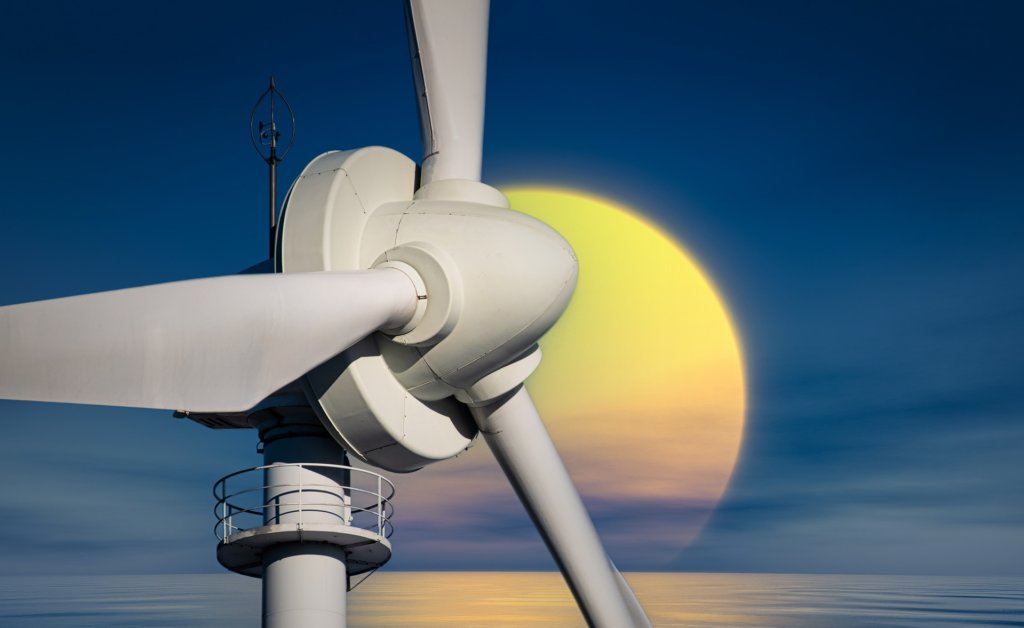Conspiracy Theories, Fake News, Wind-Turbines, and Infrasound
Renowned auditory researcher Dr. Robert Harrison brings us up to date on information and research from the Labs. Appropriately titled “From the Labs to the Clinics”, Bob is involved in laboratory and applied/clinical research, including evoked potential and otoacoustic emission studies and behavioural studies of speech and language development in children with cochlear implants. For a little insight into Bob’s interests outside the lab and the clinic, we invite you to climb aboard Bob’s Garden Railway.

We live in a very disturbing world where scientific evidence is sometimes called "fake news," truth and lies are interchangeable, and a significant number of citizens believe conspiracy-theories, spread by social media. Sound familiar?
Recently I was talking to a group of residents and municipal officials in the Golan Heights - Israel. I was physically there just before the pandemic but recently was only in a ZOOM meeting of the local planning council. The problems discussed related to plans to build wind turbines and fears by locals (fuelled by special interest groups) were adverse health effects from wind-turbine noise. Worldwide, attempts to bring green energy sources such as wind- turbines is met with organized opposition spreading false ideas about adverse health effects and generating conspiracy theories about serious health problems. (Do you remember when Mr. Trump declared that wind-turbines caused cancer?)
I have some expertise regarding wind-turbine noise, and I acted at the Golan Heights meeting as an expert scientist. My insights have developed because I understand acoustics and inner ear disease issues and have spent decades in scientific research on these subjects. Furthermore, concerning health and wind-turbines, I was part of a Canadian panel of experts who carried out a systematic review of scientific studies on wind turbines' health effects. I have reported on this panel in a previous column in Canadian Audiologist, Can wind-turbine noise make you ill? Canadian Audiologist Vol 6(1) https://canadianaudiologist.ca/issue/volume-6-issue-1-2019/column/from-the-labs/
The full Canadian expert panel report "UNDERSTANDING THE EVIDENCE: WIND-TURBINE NOISE. The Expert Panel on Wind-turbine Noise and Human Health" can be downloaded from here:
In overview, there are many regulations worldwide controlling where wind-turbines can be built, how far they are set back from homes, and the acceptable levels of noise from the turbines. Regulations include strict guidelines from the World Health Organization (WHO). Numerous systematic reviews (including my own) and many high-quality peer-reviewed studies conclude that there is no evidence of any significant adverse health effects.
Given the reality that the audible signals from wind-turbines do not cause health issues, a new conspiracy theory has emerged that INFRASOUND can cause health problems. So now we have claims that acoustic signals that you cannot hear can nevertheless cause vertigo, sleep deprivation, and stress. There are even suggestions of resulting cardiovascular disease, diabetes, and cognitive dysfunction!
Those claiming that infrasound is a health problem are eager to point out that existing turbine setback regulations do not consider that infrasound can travel much further - attenuate less over distance- than higher frequency audible acoustic signals. So, the fear-mongers will claim that many people living farther away from wind-turbines can become ill from these inaudible signals. This is an almost perfect conspiracy theory because it is challenging to disprove scientifically. How can we correlate illness reported by individuals with an acoustic signal from distant wind-turbines that cannot be heard?

Well, some excellent scientific studies have been recently (2020) completed. A series of high-quality research projects sponsored by Finland's government has concluded that infrasound does not cause adverse health effects. This study involved 5 research groups and 16 co-authors. The research was of high quality, providing good evidence. The study had large sample sizes, a good study design, and used control subjects, randomization, double-blinded data analysis, and excellent statistical treatment. See the full review here: https://julkaisut.valtioneuvosto.fi/handle/10024/162329
Here is a summary of the Finnish study. Subjects living about a mile from the wind farms and could not hear the turbines were asked if they felt any health problems from the turbines. Most did not, but some reported dizziness, hearing problems, headache, anxiety, stress, annoyance, and sleep issues. The researchers made audio recordings of the wind-turbine noise and found samples with significant infrasound levels and others with none. They played these samples (some with and some without infrasound) to participants who had reported illness symptoms and those who had not and asked about any annoyance or other symptoms (i.e., subjective responses). Also, all the subjects had a (objective) recording of physiological factors such as electro-cardiography (ECG), skin resistance (galvanic skin response), facial muscle electro-myography, eye movement measures (in some subjects only), and a cold-water stress test.
The findings were straightforward. There was no correlation between any of the subjective reports or objective measures with infrasound presence in the wind-turbine noise samples. The conclusion was stated in the study's title: "Infrasound Does Not Explain Symptoms Related to Wind-turbines."
I want to think that this issue is resolved, but alas, that will not be the case. As with so many other problems, firm, high-quality scientific evidence competes with conspiracy theory and "made-up stuff" amplified online and on social media platforms. And it is not going to get any better soon!


